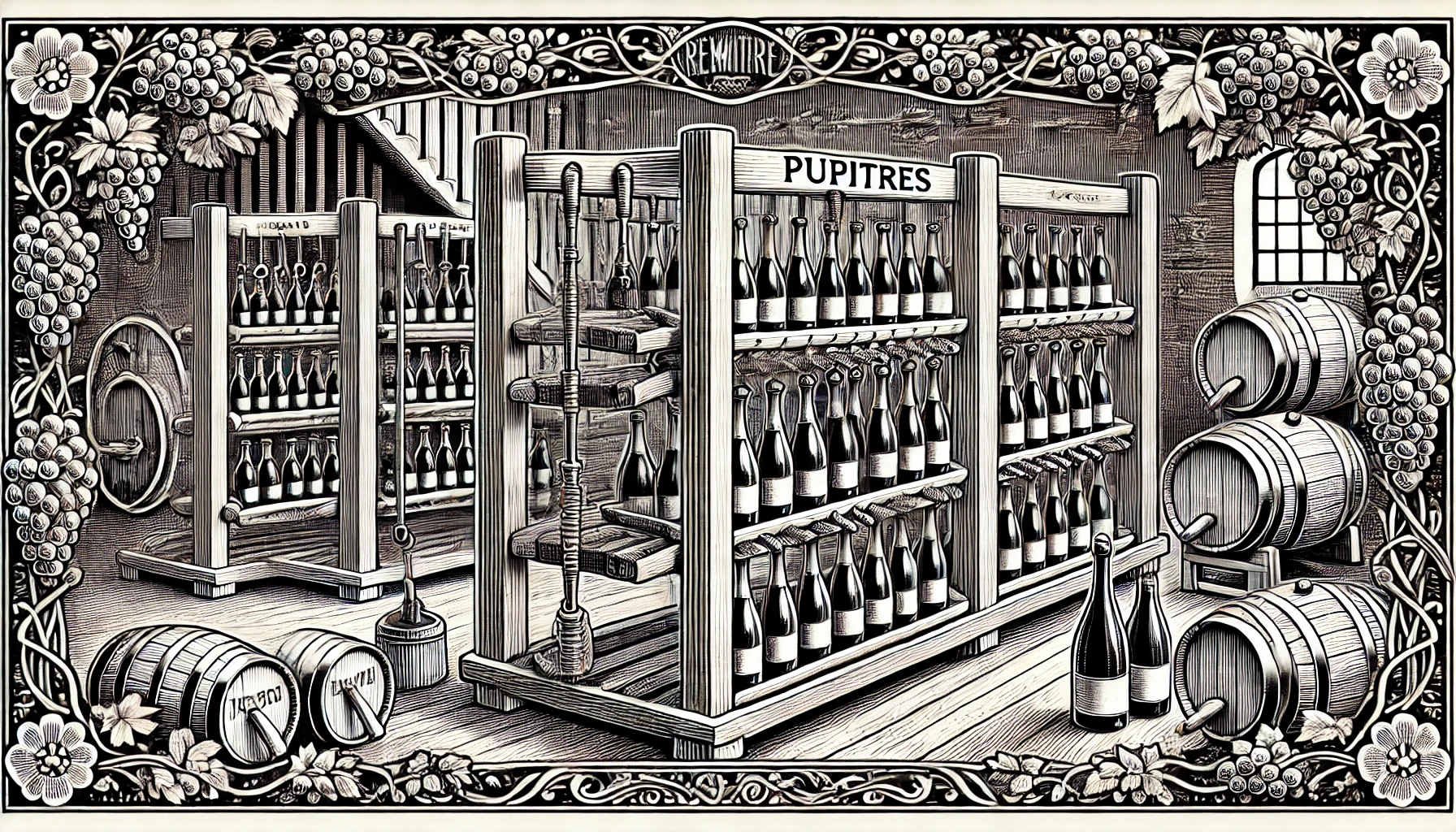
Pupitres are wooden A-frame racks that are used in the traditional méthode champenoise for the process of remuage (riddling). The design of the pupitre allows bottles of sparkling wine to be inserted at an angle, with the neck of the bottle pointing downward. This positioning helps in consolidating the sediment that forms during secondary fermentation.
The pupitre was invented in the early 19th century by Madame Clicquot (of Veuve Clicquot Champagne fame). She sought to create a more efficient method of clearing sediment from bottles without losing the precious wine. The pupitre consists of two slanted boards connected at the top, each board containing numerous angled holes into which bottles are placed.
As part of the remuage process, bottles are regularly turned and tilted by hand (or by machine, in modern wineries), gradually moving the sediment toward the neck of the bottle. This is a labor-intensive task that takes weeks. Nevertheless, the use of pupitres ensures that the sediment can be effectively removed later during disgorgement.
Though more modern solutions like gyropalettes have emerged, many traditional Champagne houses still use pupitres to maintain the heritage and artisanal touch of their winemaking processes. Pupitres symbolize the meticulous effort behind traditional sparkling wine production and are iconic fixtures in the cellars of Champagne houses.
Curious about more wine terms and insights? Visit our Wine Wiki section and explore the basic wine terms for expert definitions and tips!